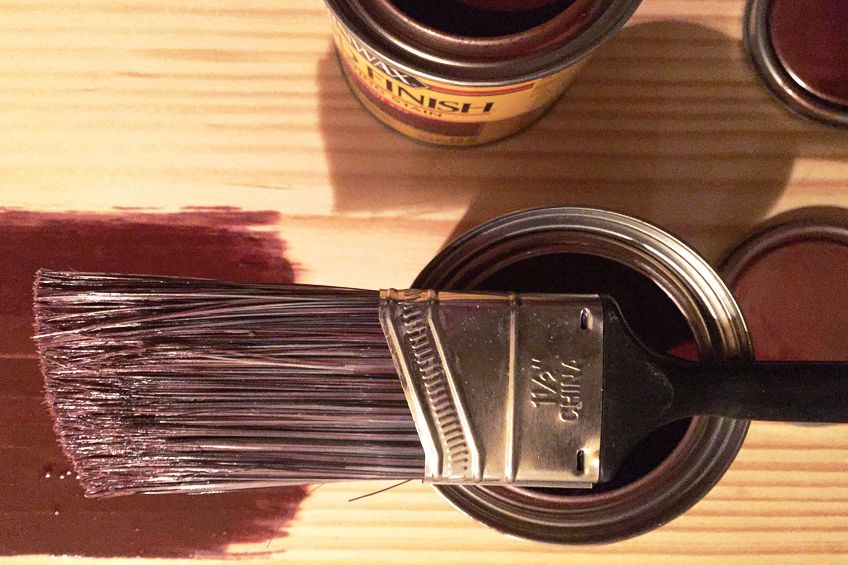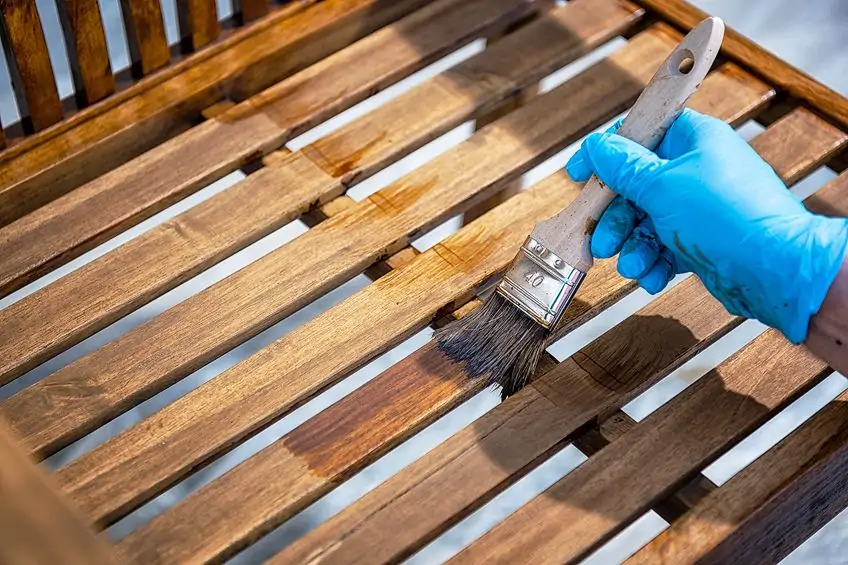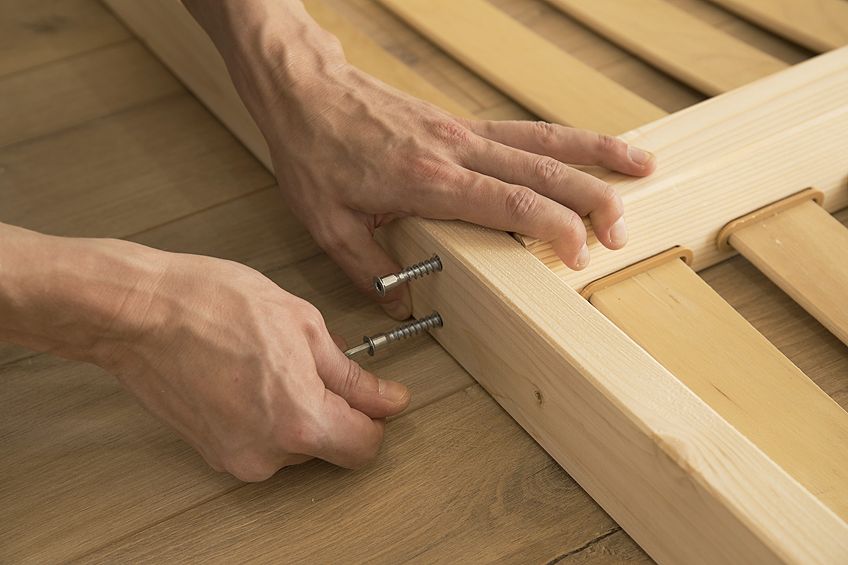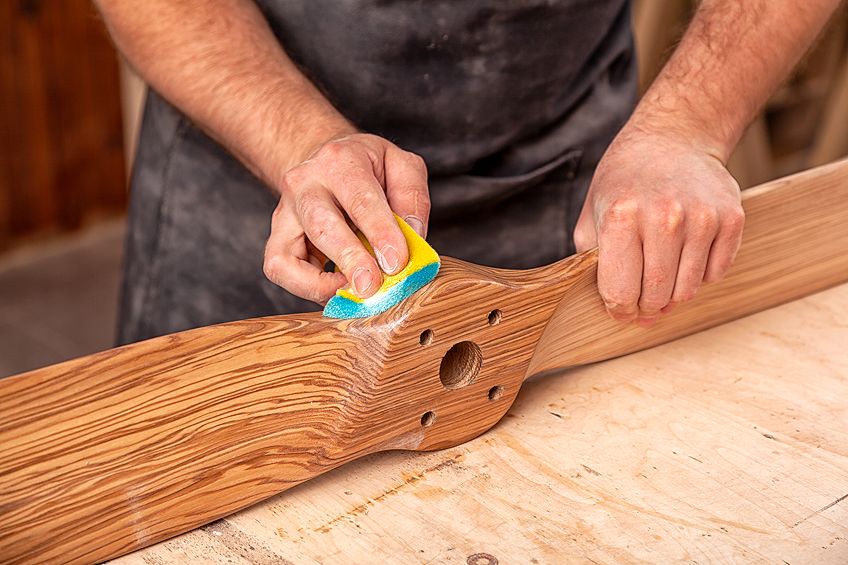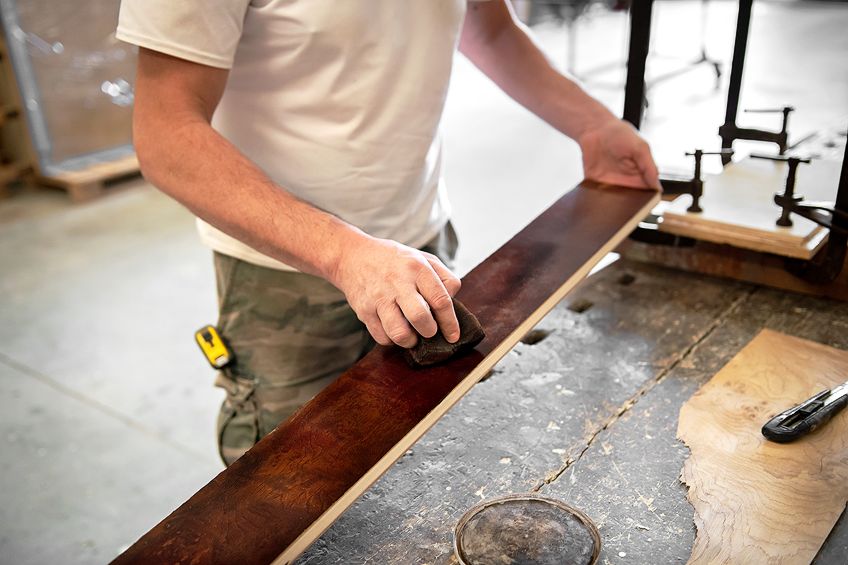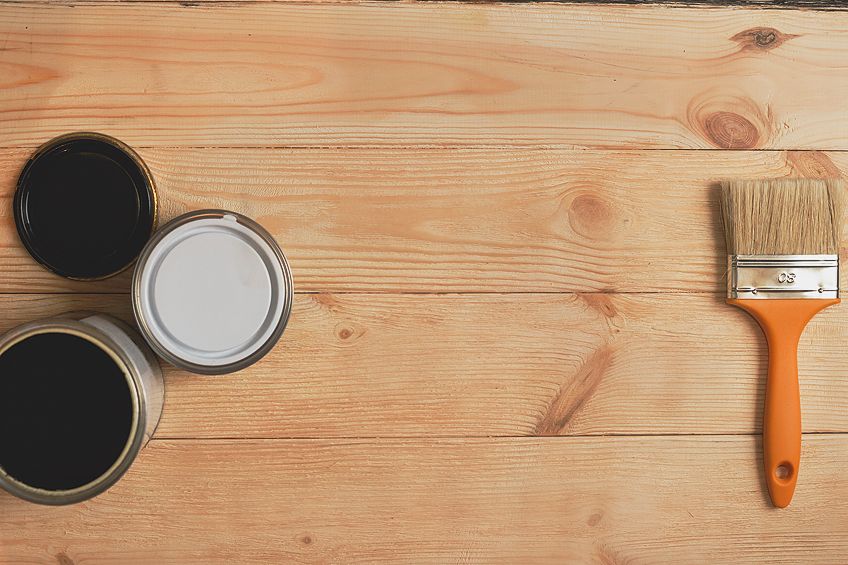Can You Stain Over Polyurethane? – Using Gel Stain Over Polyurethane
This post may contain affiliate links. We may earn a small commission from purchases made through them, at no additional cost to you. You help to support resin-expert.com
Staining wood is a great way to enhance its natural color as well as its grain. However, you may not be happy with your current polyurethane stain. The great news is that you can apply a gel stain to polyurethane. There are a few things you need to take into consideration but it is possible to use gel stain over stained wood without having to sand down your entire project. In this article, we will cover everything you need to know about applying a gel stain over polyurethane and guide you through the process. Keep reading to find out more!
Table of Contents
Types of Wood Stain
Not all wood stains are created equal. Some wood stains seal off the wood completely and others penetrate deep into the surface of the wood. Unfortunately, not all stains will work on polyurethane so before we talk about staining over polyurethane it is a good idea to cover the different types of stains for wood. This will help us get a clearer picture of what we are working with and help us get the job done right the first time.
It is important to note that polyurethane seals the wood so the wood is no longer porous which means traditional wood stains will not work.
Oil Wood Stain
Oil wood stain is very common and is one of the oldest types of wood stain. It often comes as a pure and natural oil like linseed oil. However, some of them contain additives or carriers such as solvents. These types of oil are good at preventing the drying out and subsequent cracking of wood. Bear in mind that it is not recommended that you apply a water-based stain over an oil-based stain.
Water-Based Stain
Water-based stains are often praised for the fact that they are more environmentally friendly than other stains. When working with these types of stains, cleaning up is easy with just a bit of warm water. The drying time is way quicker when compared to other stains. Generally speaking, water-based stains are more durable than oil stains. You can apply an oil-based stain over a water-based stain but you will need to make sure that the surface is completely dry and clean before you do so.
Lacquer, Varnish, and Shellac
Lacquer, varnish, and shellac can be clear but sometimes contain pigments that create a stained look on wood. Lacquer, varnish, and shellac are often referred to as stains but although they sometimes contain pigments they are not stains. These are usually applied as topcoats to seal off the wood and protect it for years to come. Lacquer, varnish, and shellac are easily applied with a brush but can also be sprayed with a spray gun for a more professional finish.
You will not be able to apply a gel stain over lacquer, shellac, or varnish successfully.
Water-Soluble Dye Stain
Lastly, we have a water-soluble Dye Stain that comes in a wide range of colors. It was initially created for use in the textile industry. As the name suggests, water-soluble dye stain comes in a powder form and needs to be mixed with water before applying it to wood. This type of stain can fade over time when exposed to the sun’s UV rays. You will not be able to use this when staining over polyurethane but you can stain over this type of stain with a gel stain.
Gel Stain
Gel stains are becoming more popular in recent years. Unlike regular wood stains, gel stains can be applied over polyurethane as they are essentially a stain and polyurethane in one. Gels stains have quite a thick consistency and the formulation is naturally non-drip so they are great for vertical surfaces. Gel stains are usually oil-based and tend to be a bit darker than other stains. Gel stain is ideal for staining over stains especially polyurethane and even paint!
Furthermore, because gel stains contain polyurethane, they bond very well to polyurethane!
How to Stain Over Polyurethane Using Gel Stain
Now that we have taken an in-depth look at the different wood stains it might be clear to you that the best stain for staining over polyurethane is a stain and polyurethane in one such as a gel stain. Using more traditional oil stain or water-based stain simply will not be able to penetrate the surface as the polyurethane will have sealed the wood, making it impenetrable.
Gel stain is the way to go but you may be asking yourself how to use gel stain over old stain? What follows is an overview of the process which should help you to get your head around the process as well as guide you through staining over polyurethane. When selecting a gel stain you need to be aware that you will not be able to stain your project lighter without stripping the wood.
To clarify, you can apply a darker stain over a lighter stain but applying a lighter stain over a dark stain will have little effect if any at all.
Disassemble and Prepare
Before you apply gel stain over polyurethane it is wise to remove all the fittings and accessories from the project you are working on. If you are working with a door, take it off its hinges and remove the doorknob and anything else you do not want to stain. If you are working with a cabinet, remove any draws, shelves, fittings, and doors.
The more you can dismantle your project the easier it will be to reach tricky areas and it will reduce the risk of staining areas that you would prefer not to.
It is recommended that you work in a well-ventilated area when working with gel stain. Once you have decided where to work you will want to protect your floors from spills using a drop cloth or old newspaper. Use masking tape to make sure that it is secure and that it will not slip out of place and expose your floor.
Cleaning
Before applying gel stain over wood, it is advised that you remove any grease, grime, or dirt from the surface of your project. A degreaser will do the trick or even some warm soap water. Just be sure that you rinse the polyurethane surface of any soap residue. Cleaning the surface before staining over polyurethane is important as any grease or grime will impair the adhesion of the gel stain to the polyurethane.
Another neat trick for cleaning tough dirt and grime is to use equal parts of water to denatured alcohol.
Dip a scourer into the solution and scrub the area that you wish to clean. Washing the surface with TSP is an even more aggressive option. Whichever method you choose it is best to rinse the area with water and wait for it to dry for at least two hours.
Sanding
Now, do not be alarmed – you will not have to sand much at all. We are not attempting to remove the polyurethane; we just want to scuff it up a bit. Creating a rough surface will enhance the adhesion as it provides a surface profile on the polyurethane that is ideal for the gel stain to bite and to hold on to. Use sandpaper with fine-grit on a sanding blouse to lightly sand the surface of the polyurethane. You can use sandpaper without a block for the tricky areas.
Remember that all that is required here is light sanding.
Avoid using heavy grit sandpaper as this may scratch the surface of the polyurethane which may through the gel stain. Use a tack cloth to remove the dust as well as the grit that may also affect the finish of the gen stain. If you do not have a tack cloth you can use a damp lint-free cloth but you will need to wait for the surface to dry before moving on to the next step.
Applying Gel Stain
This is the part we have been waiting for but before you rush into this step it is best to test your gel stain on an area that is not in plain sight. By doing this you can avoid disappointment if the color of the gel stain is not exactly what you hoped for. Before applying the stain you will want to put on some nitrile gloves as gel stain can stain your hands which can be difficult to remove.
When using a stain and polyurethane such as a gel stain you can use a paintbrush to apply it to your project. You can also use a foam applicator however these tend to create small air bubbles when pressure is applied. Using a roller is not recommended.
Apply the gel stain to your project and work one area at a time. Once you have applied the gel stain using a cloth or an applicator pad to wipe the surface while spreading and smoothing the gel stain until the desired look is achieved.
Continue in this way until you have covered the entire project. Ideally, you will want to begin with a thin layer, and if the stain is not as dark as you like you can always go over it once the first layer has dried. It is best to wait at least 24 hours for the stain to dry. However, you might need to refer to the manufacturer’s instructions for the exact drying time.
Reassemble
Once you have applied the gel stain over polyurethane and allowed enough for the stain to cure it is time to assemble your project by putting back all the fittings, drawers, and doors. Using gel stain over stained wood is far easier than removing the original stain.
Removing stain will require stripping using chemicals strippers or heavy sanding with power tools.
The method outlined above can save you a lot of effort provided that you use a stain and polyurethane in one such as a gel stain and that you are willing to stain the wood darker as applying a light-colored stain to a dark-colored stain will not lighten the stain at all.
Tips and Tricks for Staining Over Polyurethane
- A neat alternative to applying gel stain over polyurethane is using an oil-based paint that has been thinned down with paint thinner or even a clear oil-based glaze. This will create a bit of transparency which will allow the wood grain to show through the stain.
- Hold an acetone-soaked cotton ball against an inconspicuous area of your stained wood. If it starts to stick to the surface then you are dealing with shellac, lacquer, or varnish which will not take well to a gel stain. If the cotton ball does not stick then it is polyurethane and you can proceed to apply the gel stain.
- When using gel stain over stained wood, you should test the stain first on an area that is not visible to see whether or not you are happy with the shade and color of the stain. Be aware that your existing stain will influence the final result just as much as the gel stain.
- You can achieve custom colors and shades by mixing gel stains. Get creative and test your blends on a piece of scrap wood before you begin staining your project with your creations.
- If you have managed to get gel stain on your skin, baby oil can help remove it. Other oils like vegetable oil can help lift gel stain from your skin too. To avoid this problem use a pair of nitrile gloves when working with gel stain.
- As a rule of thumb, you should apply thin coats rather than thick coats of gel stain. This will help you to get an even finish. While you can use a paintbrush to apply gel stain you will want to use a cloth or applicator pad to smooth it out.
- Preparation is important as it can help you to avoid having to fix mistakes or messes. Dismantling your project is advised, as is using a drop cloth to protect your floors. However, you can clean any mess using mineral spirits.
So, can you stain over polyurethane? The short answer is, yes you can! However, you will need to bear in mind that polyurethane seals the wood so traditional stains will not be able to penetrate its pores. This is why you will want to use a gel stain over polyurethane. Gel stains are ideal for covering wood stain and even paint but you need to be willing to go a shade darker as you will not be able to lighten the existing stain by applying a lighter stain. Lastly, before you apply gel stain over polyurethane it is best to make sure the surface is clean and lightly sanded!
Frequently Asked Questions
How to Use Gel Stain Over Old Stain?
Make sure the surface is clean by washing it with detergent or TSP as grease and grime will compromise the adhesion of the gel stain. A light sanding with fine-grit sandpaper will further increase the bond of the gel stain. Apply the gel stain using a cloth and smooth it out until the desired look is achieved.
How Can I Fix a Mistake When Working With Gel Stain?
If you have made a mistake on the wood when applying gel stain you can use mineral spirits to remove the stain from the wood. Using an applicator pad can help you to evenly apply the gel stain to the wood and avoid mistakes.
How Much Sanding Is Required Before Applying a Gel Stain?
A light sanding with fine sandpaper such as 400 grit will do the trick. The idea here is to roughen the surface just enough to create a surface that the gel stain can adhere to. Avoid using sandpaper with coarse grit which will cause scratches that could show up through the stain.
How Long Should I Leave Gel Stain to Sit?
Gel stain is unlike traditional wood stains in that it does not need to sit on the surface of your project. It will not soak into the pores so there is no point in letting it sit. It is best to apply the gel stain thinly and evenly with an applicator pad or a lint-free cloth.
How Long Should I Leave Gel Stain to Dry?
Gel stain takes about 10 hours to dry, although this will vary between manufacturers. It is best to refer to the instructions for the exact time and to be safe leave it to dry for 24 hours. Bear in mind that temperature and humidity will affect these times.
Why Opt for Gel Stain?
Gel stains are ideal for staining over stains as well as polyurethane. You can even use gel stain over painted wood. Gel stain’s opacity allows the wood grain to show through the stain while highlighting its natural texture.
Can You Stain Wood With a Lighter Shade?
While you will be able to alter the tone of stained wood by applying a light shade over a dark shade the effect can be negligible. Ideally, you will want to apply a darker shade to an existing light shade of wood stain. To go from dark to light you will need to strip the current stain.


